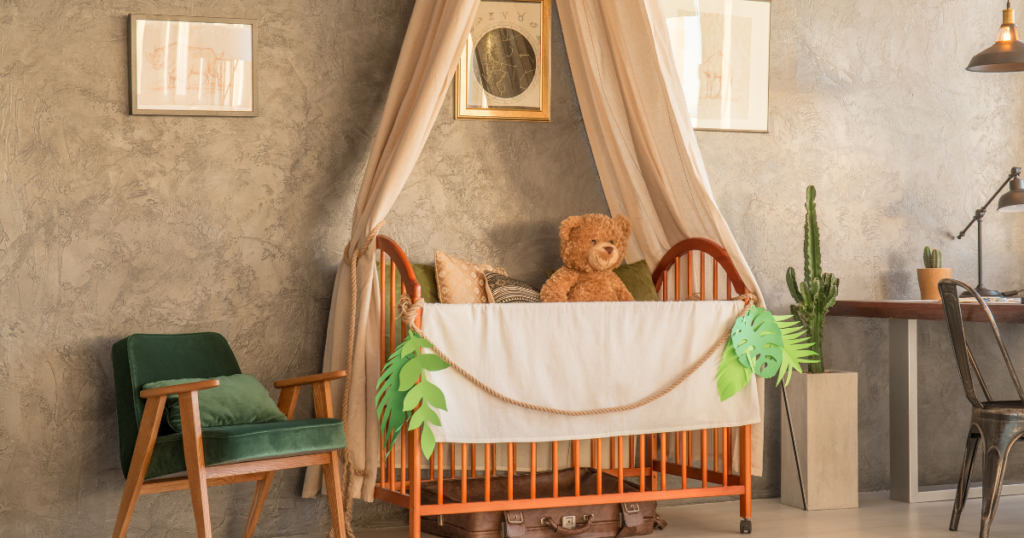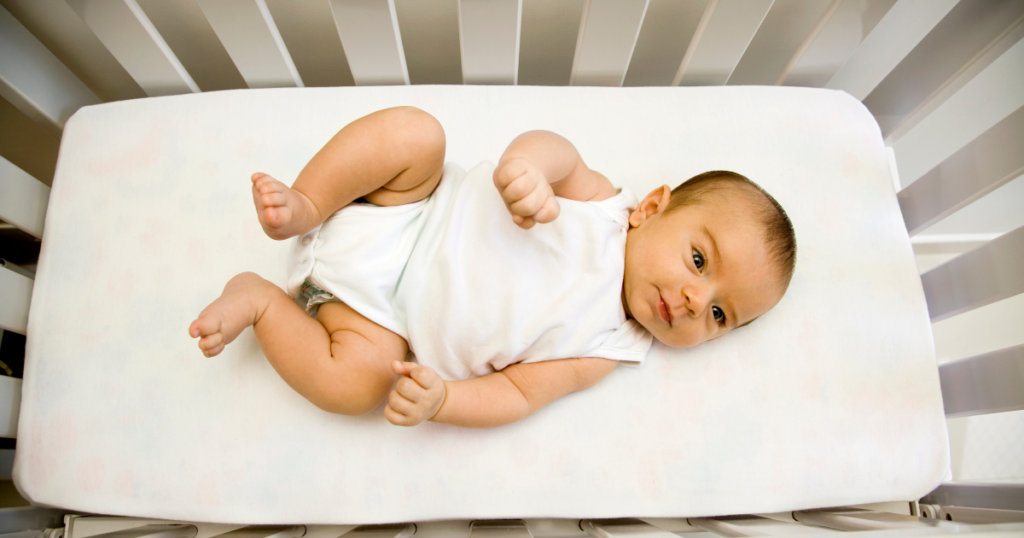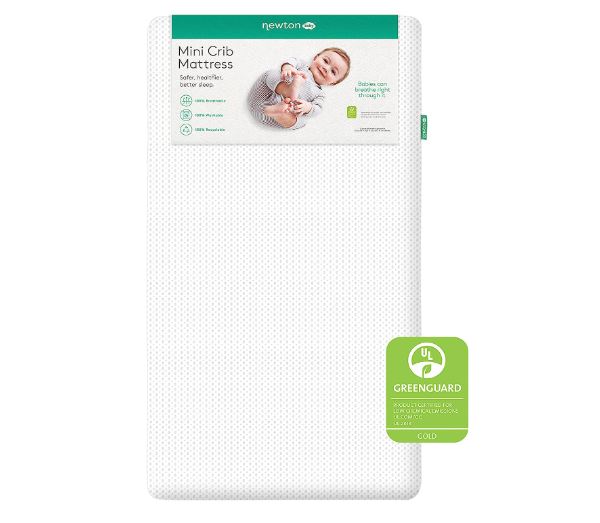How long to leave toddler in crib if not napping? This is a common question among parents because we care so much about the well-being of our kids.
In this article, I will cover how long to leave toddler in crib if not napping and other vital information you need to know about babies, napping, and cribs. I will share my experience as a mom and other research I have done on this subject matter.
First, let’s understand the role of napping in a child’s life.

Understanding the Role of Naps in a Toddler’s Life
Napping isn’t just a way to give parents a break; it plays a crucial role in a toddler’s development. Scientifically, naps help in memory consolidation, mood regulation, and physical rejuvenation.
As toddlers grow, their nap needs change. While a one-year-old might need two naps a day, by the age of three, many have transitioned to a single afternoon nap.
How Long To Leave Toddler In Crib If Not Napping?
As a mom, you must understand that every child is different, and there is no set time to leave a toddler in the crib if they are not napping.
However, the general rule of thumb is to let them be on their own for about 30-60 minutes. This time range is given to see if they can soothe themselves back to sleep or if they are entirely awake and need your attention.
It’s essential to create a bedtime routine for your toddler so they can follow it regularly. A nap time shouldn’t be too long or too short, and ideally, it can range from one to three hours.
But if your toddler is in the crib for a long time and is not sleeping, you should go and comfort them. It can be difficult to spot the signs of when your child is no longer trying to self-settle, so always make sure to keep a keen ear out for signs of distress or crying when checking in on your child.
Another thing worth considering is the disruption to a child’s nighttime sleep schedule if they spend too long in the crib without napping. Young children need plenty of sleep to grow, so it is essential to stick to a consistent sleep schedule to ensure they receive the adequate amount of sleep they need. Leaving them in the crib without napping can make bedtime difficult and make the night restless for both the child and the parent.
Recommended: Beginners guide on how much weight can a crib hold.
Some Likely Reasons Your Baby Is Not Napping In The Crib
If your baby is not napping in a mini crib or a regular one, while it is good to know how long to leave him or her in the crib, it is also important to figure out the cause of the lack of naps.
There can be several likely reasons why a baby is not napping in the crib:
Association with Sleeping Elsewhere
If your baby has gotten used to falling asleep in a different place, such as being rocked to sleep or sleeping in your arms, they may have difficulty transitioning to napping in the crib.
Teething or Illness
Babies who are teething or feeling unwell may find it uncomfortable to lie down in the crib, making it difficult for them to nap.
Overtiredness
When babies become overtired, they can have difficulty settling down and falling asleep, even in the crib. This can result from missed naps or extended periods of wakefulness.
Discomfort or Lack of Comfort
If the crib or the bedding in the crib is not comfortable or suitable for the baby, they may resist napping in it. It’s important to ensure that the crib is a cozy and safe sleeping environment.
Changes in the Environment
Any changes in the room environment, such as noise, lighting, or temperature, can affect a baby’s ability to nap peacefully in the crib.
Helping Your Child To Nap In The Crib
Helping your little one nap can be a challenge, but there are some strategies that may help. Check them out below:
Establish a Consistent Nap Routine
Create a calming and predictable routine before naptime. This could include activities such as reading a book, singing a lullaby, or dimming the lights. Consistency helps signal to your child that it’s time to wind down and prepare for sleep.
Create a Sleep-Friendly Environment
Whether you have a white crib or a black crib, or any other color, make sure the nap environment is comfortable, quiet, and darkened. Use blackout curtains or blinds to block out any excess light. White noise machines or soft music can also help drown out distracting sounds.
Set the Right Temperature
Ensure the room is neither too hot nor too cold. A comfortable temperature can make it easier for your child to settle down and nap peacefully.
Encourage Wind-Down Time
Before naptime, engage in calming activities with your child. Avoid stimulating activities or screens close to naptime, as these can make it harder for them to relax.
Use Soothing Techniques
Implement soothing techniques that work for your child, such as gentle rocking, patting, or using a pacifier. Find what helps your child feel calm and secure, and incorporate those techniques into the naptime routine.
Be Mindful of Awake Times
Pay attention to your child’s awake times between naps. Overly long or short awake periods can affect their ability to fall asleep easily. Adjust the timing of naps based on your child’s age and individual needs.
Be Patient and Persistent
Some children take longer to establish a consistent nap routine. Be patient, stay consistent, and keep trying different approaches until you find what works best for your child.
Should I Put My Toddler To Bed Early If They Didn’t Nap?
Yes, you should! If your toddler didn’t nap during the day, it may be a good idea to put them to bed a bit earlier than usual. Lack of daytime sleep can lead to overtiredness, which can make it harder for your child to fall asleep and stay asleep at night.
Children need enough sleep in the early stage of their lives for healthy growth. Putting your little one to bed earlier can help compensate for the missed nap and ensure they get enough rest.
However, from my experience, every child is different, so it’s important to observe your toddler’s behavior and adjust their bedtime accordingly.
What worked for my first child was quite different from how my last child reacted to it. Observation is key in motherhood if you want to perfectly understand your child’s behavior.
Are There Negative Impacts For Lack Of Naps For My Toddler?
Yes, there can be negative impacts of lack of naps for toddlers.
Research suggests that missed naps by toddlers can lead to more anxiety, less joy and interest, and a poorer understanding of problem-solving.
Lack of sleep can make it more difficult for toddlers to concentrate, leading to overactive behavior and easy distraction.
Additionally, daytime napping has been found to be negatively correlated with neurocognitive function in preschoolers. Inadequate sleep can also affect a toddler’s ability to learn and their mood.
Sleep deprivation in children can contribute to behavior problems, impaired learning, obesity, decreased immunity, and mood disorders.
It’s important to ensure that your toddler gets enough rest and regular naps to support their development and overall well-being.
Safety Measures To Take While Your Child Is Napping In A Crib
When your child is napping in a crib, it’s important to implement safety measures to ensure their well-being. Here are some safety tips to keep in mind:
Back to Sleep Position
Always place your baby on their back to sleep, as this helps reduce the risk of Sudden Infant Death Syndrome (SIDS).
Use a Firm Mattress
Ensure that the crib mattress is firm and fits snugly in the crib. This helps prevent suffocation and reduces the risk of SIDS.
Remove Loose Bedding
Keep the crib free from pillows, blankets, stuffed animals, or other loose bedding that could pose suffocation hazards. Instead, use a fitted crib sheet.
Safe Sleep Environment
Create a safe sleep environment by removing any potential choking hazards, such as small toys or objects, from the crib.
Proper Crib Placement
Place the crib away from windows, cords, curtains, or blinds to prevent entanglement or the risk of falling objects.
Regular Supervision
It is essential to supervise your child while they nap to ensure their safety. Regularly check on them and monitor the temperature in the room.
By following these safety measures, you can help create a secure and protected sleeping environment for your child while they nap in the crib.
Conclusion
The amount of time to leave a toddler in the crib if not napping is subjective. However, it’s good to let them be for thirty to sixty minutes to determine if they can soothe themselves back to sleep.
Developing a consistent nap and nighttime sleep schedule for a toddler is crucial to ensure they receive the required sleep and grow healthy.
Lastly, always make sure to prioritize your child’s safety by keeping the crib safe and free of any objects that might cause harm. Embrace these tips, and you can be sure to make bedtime routines easier and successful.




